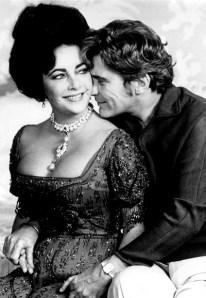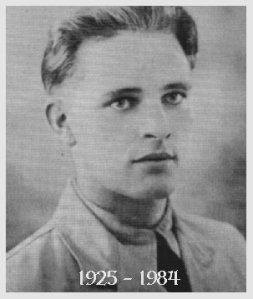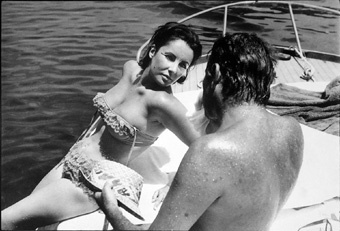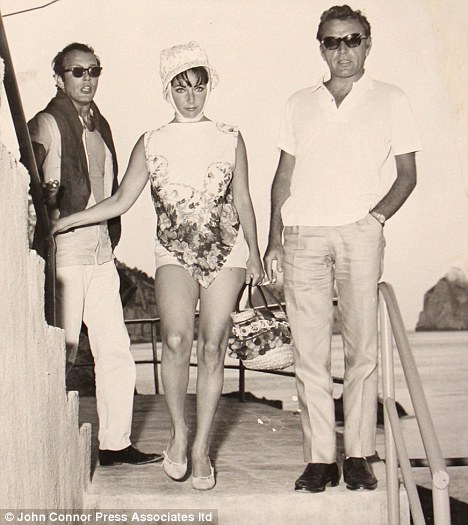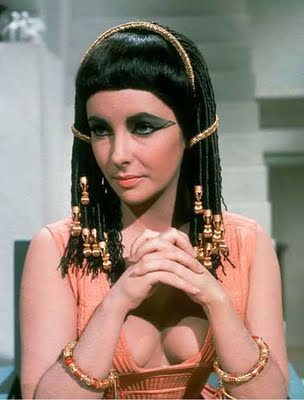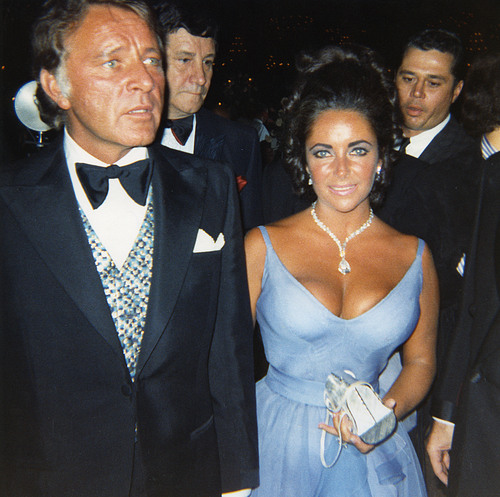
Engaged to be married, Elizabeth Taylor and John Warner visit his alma mater, Washington and Lee, as well as visiting nearby Virginia Military Institute. November 11, 1976
They made their debut as a couple at the Virginia Military Institute, Lexington, on Founders’ Day on November 11, 1976, where John Warner gave a speech and Elizabeth Taylor looked up adoringly at her fiancé – rugged yet stately, tall, muscular, with “marvelous silver hair.” John then introduced Elizabeth, who promptly stood up and saluted the cadets. The men temporarily forgot their military bearing and tossed their hats up into the air.
John Warner had been appearing at functions around Virginia, testing the political waters for a possible U.S. Senate run in 1978. Elizabeth’s name recognition lent star power to his possible candidacy, raising his political profile. He amused audiences with this oft-repeated anecdote:
I feel just like Ben Franklin. He was born in Boston. Moved to Philadelphia. Met a lady on the street. They got engaged. And then he discovered electricity. Ladies and gentleman,’ he would conclude, turning toward wife Elizabeth, “allow me to share some electricity with you.” (1)
Elizabeth was bowled over by Warner from the start, when he was her blind date to a British Embassy ball in honor of Queen Elizabeth II of England on July 8, 1976. Elizabeth was in the middle of a second bruising divorce from Richard Burton. Three years earlier, Warner had divorced Catherine Mellon, the daughter of billionaire Paul Mellon. Their divorce was so friendly that she lived next door to his 2,600 acre farm outside Middleburg, Virginia, in Atoka, to more easily share the care of their three children. Elizabeth was worth $50 million; Warner, $10 million, a result of his hefty post divorce settlement. Warner was one of the nation’s most eligible bachelors – a playboy, definitely – who unabashedly selected dates and debutantes out of the Social Register and Washington, D. C., Green Book, copies of which he kept on his desk at all times. He had dated many desirable women, including TV host Barbara Walters, remarking to her that
A woman like you could probably get me elected senator. “
She declined his proposal. (2)
But Barbara Walters was no match for the celebrity and mega-glamour of super-sexy La Liz.
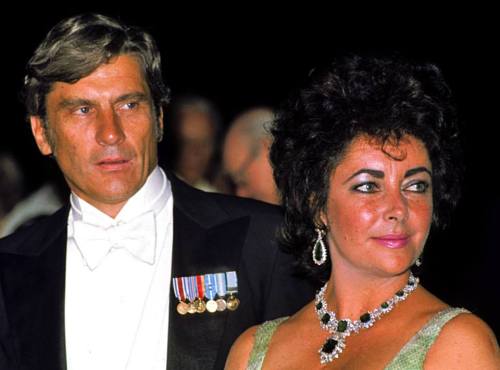
John Warner and Elizabeth Taylor, first date, July 8, 1976, at a reception for Queen Elizabeth II at the British Embassy. At the time, John Warner was the Director of the American Revolution Bicentennial Administration, appointed by President Gerald Ford.
There was much speculation about this power couple. Was John using Elizabeth to advance his career? Would she boost his chances of winning the 1978 U.S. Senate seat from Virginia? Or, rather, would her five previous marriages and scandals drag him down?
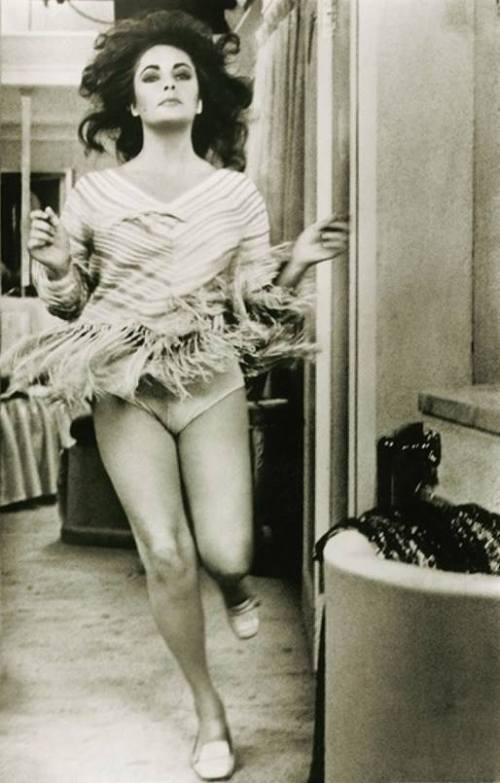
Elizabeth Taylor, 39, in a scene from X, Y, and Zee, 1971. Elizabeth Taylor was a beautiful and talented woman with a name known around the world.
Elizabeth was ready to leave behind the showbiz life, marry this country gentleman farmer/lawyer, and become the Lady of the Manor. Warner’s farm at Middleburg was a little over an hour away from Washington:
It sat at the end of a mile-long drive, amid spacious fields where a herd of 600 pedigree Hereford cattle grazed….Elizabeth was enchanted by the duck ponds….The farm won her heart….She married John Warner for his roots.” (2)
There were horses there, too, evoking Elizabeth’s idyllic childhood in England. Although Elizabeth owned homes in Mexico and Switzerland, she had spent the bulk of the last fifteen years living on her and Burton’s yacht, the Kalizma, and in hotels around the world. She had made over fifty films, had four children, and had been married six times, twice to Richard Burton. Elizabeth, a star since childhood, had been a vagabond her entire life. She needed a change. A marriage to John Warner would bring with it a home, something sorely lacking in her chaotic world.
Five months after their first date, they tied the knot. On Dec. 4, 1976, Elizabeth Taylor and John Warner were married at the top of a hill on the farm, in a simple Episcopalian ceremony, at sunset. Only Warner’s son, the rector, and a few friends were also in attendance. Elizabeth wore a purple turban, a dress of lavender grey, with gray suede boots and a matching coat of silver fox. She carried a bouquet of lavender and her husband’s gold wedding band in her glove.
Elizabeth relaxed into her new role. “I’m so happy to just be John’s wife. I finally feel that I have a home. My search for roots is finally over.” (3) John called her his “Little Heifer” and “Pooters.”
She was now Elizabeth Taylor Hilton Wilding Todd Fisher Burton Burton Warner but she called herself “Mrs. John Warner.” The wedding was international news, one paper shouting:
Here She Goes Again, Number 7 for Liz
(1) Kelley, Kitty. Elizabeth Taylor: The Last Star. New York: Simon and Schuster, 2011.
(2) Heymann, C. David. Liz: An Intimate Biography of Elizabeth Taylor. New York: Simon and Schuster, 1995, 2011.
(3) Taraborrelli, J. Randy. Elizabeth. New York: Grand Central Publishing, 2007.
Readers: For more on Elizabeth Taylor, click here.
